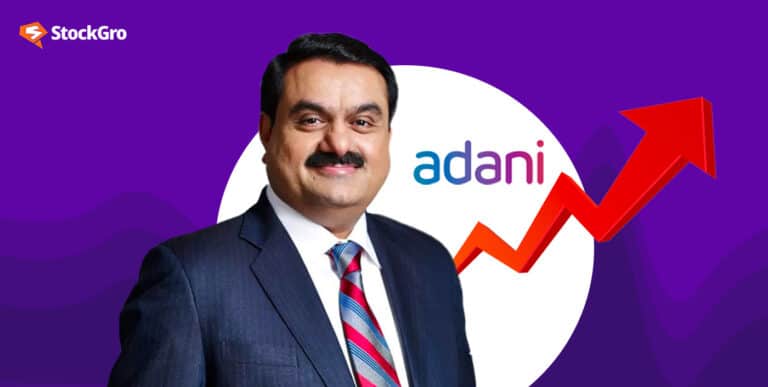
Last year, Indian billionaire Mukesh Ambani revealed his master plan to shake up the multibillion-dollar financial services industry. And guess what? Shareholders and creditors have given their thumbs up to this audacious move.
Reliance Industries Limited (RIL) is gearing up to make its mark in the highly under-penetrated insurance sector. If you thought Mukesh Ambani’s impact was limited to revolutionising the telecom sector with Jio Infocomm and shaking up the OTT space with free streaming of IPL on JioCinema, well, think again!
RIL announced the demerger of its financial services business, which will now operate as a separate entity under the name Jio Financial Services Ltd (JFSL). Jio Financial Services is also gearing up to go public, allowing investors to get a slice of the action. Now, that’s a financial revolution in the making!
Jio Financial Services Limited
But what’s the big idea behind all this? Well, JFSL and its subsidiaries, called JFS, are here to unleash the power of technology and make financial services accessible to the masses.
With India’s population crossing a whopping 1.4 billion, there’s no time to waste! By leveraging Reliance’s technological capabilities, JFS aims to digitally deliver financial products and services to every nook and cranny of the country. Talk about democratising finance!
If you think Jio Financial Services is just another player in the game, think again! According to calculations by Centrum Broking, Jio Financial could become India’s fifth-largest financer in in terms of net worth. Yes, you heard it right, bigger than heavyweights like Kotak Mahindra Bank and Bajaj Finance.
With an estimated net worth of Rs. 10.84 lakh crore, Jio Financial is ready to flex its muscles and redefine the financial landscape.
But that’s not all. The financial services business of RIL had a turnover of Rs. 1,387 crore as of March 31, 2022. Impressive, right?
But what exactly will JFSL focus on? Well, here is what is predicted.
You may also like: How Adani Group stocks rose to Rs. 63,418.85 cr in a single day
A world of opportunities for JFSL
JFSL is not just dipping its toes in one pond; they’re ready to make a splash in multiple revenue streams. Let’s take a look at some of the exciting revenue streams that JFSL can explore:
1. NBFC
- Retail credit: BNPL, EMIs - small credits but a very large market.
- Merchants: One million merchants with an average of INR 5 lakh credit to them result into a total addressable market of INR50 lakh crore for JFSL.
2. Customers
- Jio, Reliance Retail, Moneycontrol: Large customer base where services can be offered. Could have a competitive advantage in acquiring customers.
3. Distributors of financial products
- Insurance: Selling insurance products of other companies.
- Mutual Funds: Selling mutual fund schemes of other fund houses.
- Equity: Selling equity products.
- Fixed Deposits: Offering Fixed Deposit schemes.
4. Own products
- Insurance
- Asset Management Companies
- Credit Cards for SME/MSMEs: For their corporate payments, which could lead tothe customisation of credits.
*Source: KR Choksey
When it comes to assembling a winning team, Mukesh Ambani knows how to make the right moves. KV Kamath, the former CEO of ICICI Bank, is stepping in as the chairman of JFSL and is poised to increase in the competitive intensity in retail lending, NBFC, and fintech spaces. And Hitesh Sethia has been appointed as the CEO, ready to steer JFSL toward its ambitious goals.
The omnichannel advantage
Here’s where it gets even more exciting. JFSL will leverage the widespread omnichannel presence of Reliance’s consumer businesses. Imagine the power of synergies between Jio’s telecom empire, Reliance Retail’s massive reach, and JFSL’s financial prowess.
It’s like combining the forces of Superman, Batman, and Wonder Woman—all in one!
Also Read: Rebalancing your finances and inner zen!
Competition to market players
Analysts are already warning about the impact Jio Financial Services can have on Paytm’s rival, PhonePe. In fact, brokerage Macquarie highlighted the higher risks Paytm may face with the entry of Jio Financial Services.
With a large balance sheet, diverse product offerings, and a focus on manufacturing most of their own products, JFSL poses a significant competitive threat to fintech business models and NBFCs.
Asset management pioneers
Now, let’s explore the world of asset management. These companies have been entrusted with managing vast amounts of wealth, and they’ve proved their mettle in the market.
| Asset Management Companies | Average AUM | YoY Change | Market Share |
| SBI Mutual Fund | Rs. 5,678,649 million | -34.37% | 14.79% |
| ICICI Prudential AMC Ltd | Rs. 4,956,688 million | -2.87% | 12.91% |
| HDFC AMC Ltd | Rs. 4,442,235 million | 1.13% | 11.56% |
| Nippon Life India Asset Management Ltd | Rs. 2,754,510 million | -6.57% | 7.17% |
| Kotak Mahindra Asset Management Co Ltd | Rs. 2,853,830 million | 1.70% | 7.43% |
A glimpse of the insurance landscape
Before we delve into Reliance’s plan, let’s take a quick look at the existing insurance space in India. India’s insurance sector has been on a phenomenal growth trajectory, playing a crucial role in protecting families and driving business growth.
With a yearly growth rate of 32-34%, it’s no surprise that India is ranked as the fifth most prominent life insurance market among emerging economies.
Jio BlackRock: The dynamic duo
In a stunning joint statement, Jio Financial Services and BlackRock announced their plan to establish a joint venture called Jio BlackRock. Their mission? To provide tech-savvy Indians with affordable and innovative investment solutions.
This partnership involves a combined investment of $300 million, with each company contributing $150 million to the venture.
The Indian mutual fund space is already crowded with big players like SBI Mutual Fund, ICICI Prudential Mutual Fund, and HDFC Mutual Fund. But here comes the twist—Jio BlackRock is joining the party as the 44th player in this multi-trillion-dollar industry.
Jio Financial brings its technical expertise and an ever-expanding customer base to the table. On the other hand, BlackRock boasts a global track record as a formidable fund house.
While some experts believe that a new player can shake up the market. A. Balasubramanian, chairman of the Association of Mutual Funds in India, argues that the ultimate measure of success is not just “selling products” but “generating returns” for investors. Returns will be the yardstick that determines Jio BlackRock’s fate.
Can Jio BlackRock live up to the challenge? Only time will tell!
Digital vs. Agents
LIC relies heavily on its massive army of 1.4 million agents to bring in business. But JFSL is flipping the script. They’re going all-in on digital distribution. Why pay hefty commissions to agents when you can tap into the power of technology? JFSL is all about efficiency and reaching customers directly through digital channels
Life insurance is a capital-intensive business; when agents take a major chunk of your business, those commissions can add up. Their focus on digital distribution means they can cut costs and offer competitive pricing. It’s a win-win situation for both JFSL and their customers.
Also Read: Market cycles: Riding the rollercoaster of stocks
The game-changing composite licence
Now, here’s where things get really interesting. The upcoming Insurance Laws (Amendment) Bill is set to introduce the concept of a composite licence, giving insurance companies the green light to venture into multiple sectors all at once. That means JFSL could potentially dive into life insurance, non-life insurance, and specialised health insurance, all under one roof.
Let’s take a quick look at the top five life insurance companies in India, based on premium income in the fiscal year 2022:
| Life insurance companies | Premium Income (in millions) | YoY Growth | Market Share |
| Life Insurance Corporation of India (LIC) | Rs. 4,276,052 | 6.14% | 61.78% |
| SBI Life | Rs. 587,596 | 16.92% | 8.49% |
| HDFC Life | Rs. 459,628 | 19.13% | 6.64% |
| ICICI Prudential | Rs. 374,580 | 4.83% | 5.41% |
| Max Life | Rs. 224,142 | 17.86% | 3.24% |
| Non-Life Insurance companies | Premium Income (in millions) | YoY Growth | Market Share |
| The New India Assurance | Rs. 325,739 | 14.10% | 14.76% |
| ICICI Lombard | Rs. 179,769 | 28.38% | 8.14% |
| HDFC ERGO | Rs. 134,975 | 9.78% | 6.12% |
| Tata AIG | Rs. 100,250 | 24.66% | 4.54% |
| Reliance General Insurance | Rs. 94,090 | 13.22% | 4.26% |
These industry heavyweights have set the bar high, but JFSL is ready to shake things up and challenge the status quo.
As for the specifics of JFSL’s performance and market share, it’s a bit tricky to find concrete information at the moment. RIL’s annual general meeting, typically held in July or August, is just around the corner. That’s when they’re likely to spill the beans and announce their roadmap for the insurance business.
With Reliance’s unwavering focus on technology and digital innovation, we can expect a wave of fresh ideas and best practices to enter the industry, benefiting both customers and the sector as a whole.

